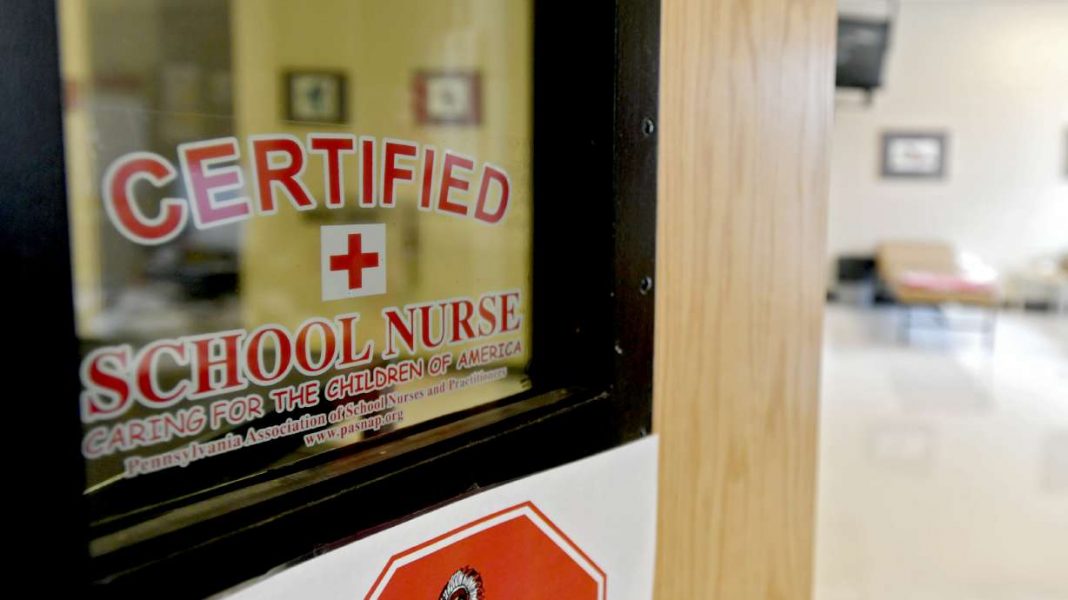From the heart of FORT WORTH, Texas — Last year, Trenace Dorsey-Hollins’ daughter, who is just 5 years old, was frequently unwell. Adhering to the school’s guidelines, Dorsey-Hollins ensured her daughter stayed home whenever she had a cough, a sore throat, or any other illness, until she was fully recovered.
As the school year was drawing to a close, the school authorities in Fort Worth, Texas, summoned her to discuss the high number of absences her daughter had accumulated.
During the height of the pandemic, schools were adamant that parents and children should stay home at the slightest sign of illness. However, even though the emergency situation has subsided, Dorsey-Hollins claims that no one has clarified whether these rules have been revised.
“The situation is incredibly perplexing,” she expressed.
“In the past, if the child didn’t have a fever over 100, then it was deemed acceptable to send them to school,” said the mother of a 5- and 13-year-old. “But now it seems like if they have a cough or they’re sneezing, you might want to keep them home. So, which is the correct approach?”
The inconsistency in guidance on when to keep children home has only exacerbated the confusion, which many believe is contributing to the nationwide epidemic of chronic school absences. Some advocates, school systems, and even the state of California are now encouraging children to attend school even if they have minor illnesses like a cold, lice, or pinkeye.
Hedy Chang, the executive director of Attendance Works, a national nonprofit aimed at improving school attendance, believes that families need to understand that they no longer need to keep their children home at the slightest sign of illness. The organization has issued its own guidance, urging parents to send their children to school if they are capable of participating in daily activities.
‘Navigating the Challenge’
“We now have to re-engage children and families and alter their perception about this,” Chang stated.
The American Academy of Pediatrics advises that children should stay home if they have a fever, vomiting or diarrhea, or if they “are not well enough to participate in class.”
Striking the right balance is a challenge, and it’s understandable that different places would have different approaches, said Claire McCarthy, a pediatrician at Boston Children’s Hospital and professor at Harvard Medical School.
“Each school or school district has a different tolerance for illness,” McCarthy noted.
This leaves many parents feeling bewildered.
“It’s a struggle,” admitted Malika Elwin, a mother of a second grader on New York’s Long Island.
She doesn’t want to risk exposing other children or overburden the teacher with her daughter’s runny nose, so she’s kept her daughter home longer even though she’s feeling better because she still has cold symptoms. “Then I regret that because she just runs around here all day perfectly fine,” she confessed.
For those who test positive for COVID-19, the CDC still recommends staying home and isolating for at least five days. However, guidance from states and individual schools varies widely. In some school systems, guidance allows for students who test positive to go to school as long as they are asymptomatic.
‘A Shift in Perspective’
Some authorities have reassessed their tolerance for illness. During the 2021-2022 school year, more than a quarter of students missed at least 10% of the school year, up from 15% before the pandemic.
Missing that much school puts students at risk of not learning to read or graduate. Absent students also miss out on meals, social interaction with peers and caring adults, physical exercise, and access to mental health counseling and health care. In other words, missing school has its own health effects.
And when a class sees high levels of chronic absenteeism, it affects the students who are present because a teacher has to spend time reorienting the students who have been away.
Noha Aboelata, who leads the Roots Community Health Center in Oakland, California, said that the shift in guidance could disproportionately impact low-income communities and people of color. People in these communities might be more likely to live in multigenerational homes, take crowded public transportation or have poor ventilation in their homes. When people are out and about while sick, vulnerable loved ones could be put at risk.
She had hoped that the lessons learned during the pandemic about staying home when contagious and taking care of oneself and one’s family when sick would persist beyond the public health emergency. Instead, she said, “it feels like the pendulum is swinging fiercely back in the other direction.”
But changing the culture around school absences goes beyond just issuing guidance.
Some schools in San Diego County seem unaware of California’s new guidance allowing kids to attend school while mildly sick, said Tracy Schmidt, who oversees attendance for the county Office of Education.
However, others have adopted it and have begun discussing symptoms with parents who call to report their children are sick, urging them to bring them in and see how it goes. It gives her hope that as more schools and parents learn about this guidance, students will miss less school.
“The most important place for our kids to be is school,” she emphasized. “We need to abandon this mindset that we had to adopt during the pandemic because we were in a public safety emergency.”
The Associated Press’ education coverage receives financial support from multiple private foundations. The Associated Press is solely responsible for all content.




Disagree
#Disagree It’s important to prioritize the health and well-being of students. Encouraging attendance with minor illnesses may lead to further spread of contagious diseases and hinder recovery.